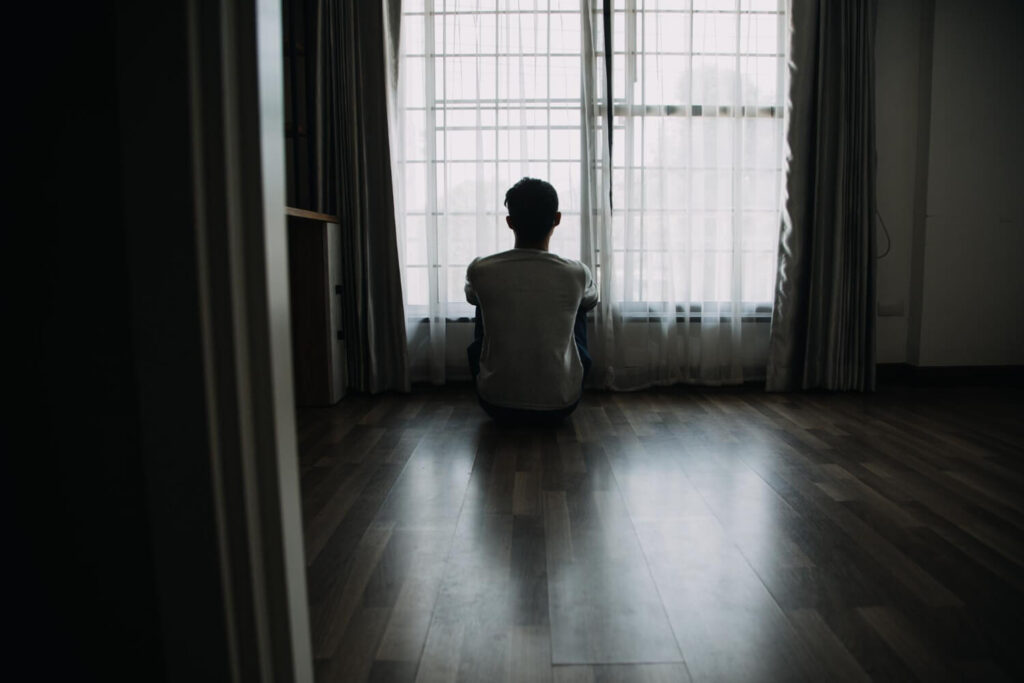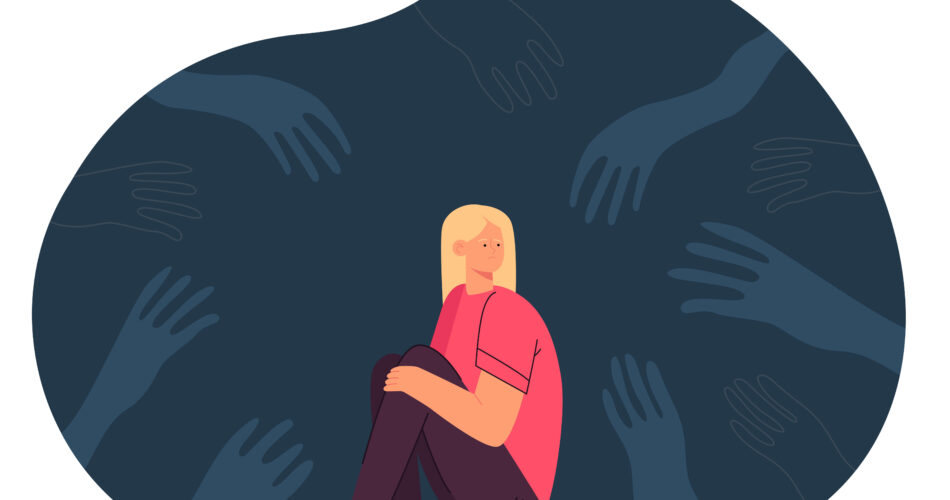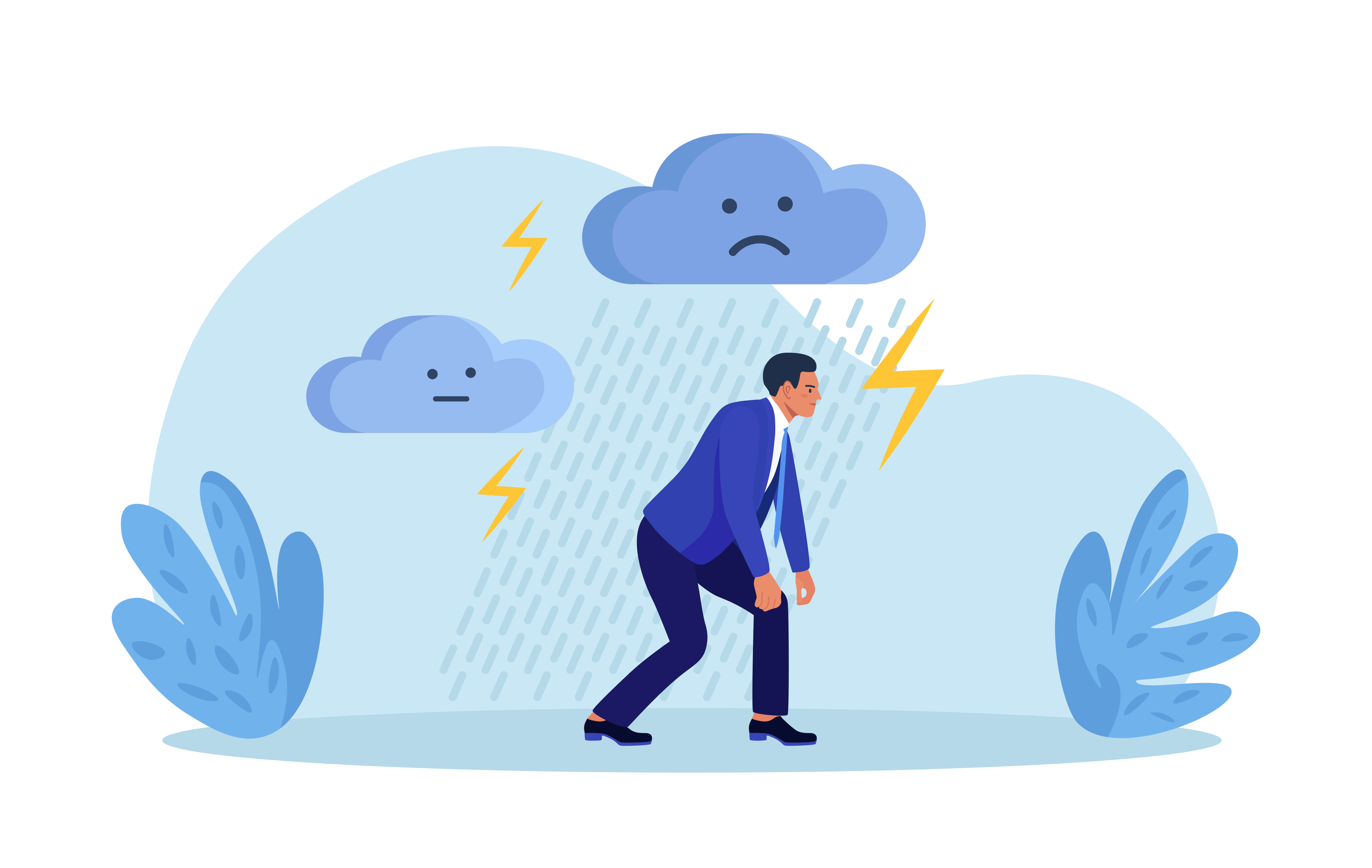Living with persistent depressive disorder can be challenging, as the symptoms can be long-lasting and affect various aspects of life. However, there is hope for those with this condition. With the right treatment and support, individuals with this mood disorder can learn to manage their symptoms and improve their quality of life.
In this blog, we will explore the possible symptoms and causes that may trigger the development of this condition. By knowing such critical information, the patient can know where to begin such as seeking help from a mental health expert. Let’s begin!
Understanding Persistent Depressive Disorder or Chronic Depression

Persistent depressive disorder, also known as chronic depression or dysthymia, is a mental health condition characterized by a persistent sad or low mood. It is different from major depression, which involves more severe symptoms but may be shorter in duration. People with persistent depressive disorder experience depressive symptoms for a long time, typically lasting for at least two years in adults and one year in children and adolescents.
This dysthymic disorder can significantly impact a person’s life due to its prolonged nature. Thus, making it impossible to retain relationships. That’s why it is essential to recognize the occurrence of this disorder to address it immediately.
What Sets it Apart from Other Forms of Depression
The nature of this mood disorder is milder compared to other types of depression. Persistent depressive disorder stands out from other forms of depression due to its chronic nature and less severe symptoms. Unlike major depressive disorder or MDD, which is characterized by intense and episodic symptoms, persistent depressive disorder involves a more continuous and long-lasting low mood.
Additionally, persistent depressive disorder differs from bipolar disorder, which involves alternating periods of depression and mania or hypomania. In persistent depressive disorder, the mood remains consistently low without the presence of manic or hypomanic episodes.
On the other hand, panic disorder and chronic depression also differs. While panic disorder produces recurrent panic attacks and intense periods of fear or discomfort, persistent depressive disorder primarily manifests as a chronic feeling of sadness or hopelessness.
Lastly, postpartum depression and PDD is also not the same as postpartum involves a specific life event, which is childbirth. Even though both disorders can persist over an extended period, still the factor of life event is the top contributing factor of postpartum depression.
Understanding these differences is crucial for accurate diagnosis and appropriate treatment of persistent depressive disorder. By recognizing the unique characteristics of this condition, healthcare providers can develop tailored treatment plans to address the specific needs of individuals with persistent depressive disorder.
The Importance of Recognizing Chronic Low Mood
Recognizing chronic low mood, such as persistent depressive disorder, is essential for several reasons. Firstly, chronic low mood can significantly impact a person’s overall well-being and quality of life. Individuals with persistent depressive disorder may experience ongoing feelings of sadness, emptiness, and hopelessness, making it challenging to engage in daily activities and maintain healthy relationships.
Secondly, chronic low mood can be a sign of underlying mental health issues, including depression and anxiety. It is crucial to identify and address these issues early on to prevent them from worsening and causing further distress.
Lastly, recognizing chronic low mood allows individuals to seek appropriate help and support. With the right treatment and support, individuals with persistent depressive disorder can learn to manage their symptoms and improve their mental health and well-being.
By understanding the importance of recognizing chronic low mood, we can work towards reducing the stigma surrounding mental health and ensuring that individuals receive the care and support they need.
Symptoms and Signs of Persistent Depressive Disorder
Symptoms of persistent depressive disorder can vary in intensity and may fluctuate over time. Patients may notice a close resemblance of symptoms with other depression, but it’s best to weigh its impact. That’s because PDD is known to last longer, so if the symptoms occur for a longer time, it can signify persistent depressive disorder.
Here are the symptoms to check:

Early Depression Symptoms
- Persistent feelings of sadness, emptiness, or hopelessness
- Loss of interest or pleasure in activities once enjoyed
- Fatigue or low energy
- Changes in appetite or weight
- Difficulty sleeping or excessive sleeping

Severe Depression Symptoms
- dark mood such as Intense feelings of sadness, hopelessness, or emptiness
- negative thoughts like suicide
- Loss of interest or pleasure in all activities
- Persistent fatigue or low energy
- Significant changes in appetite or weight
- Difficulty concentrating or making decisions
- Sleep disturbances, such as insomnia or excessive sleeping
If you or someone you know is experiencing these early symptoms consistently for an extended period, it is important to seek medical help promptly. A healthcare provider can conduct an evaluation and make a proper diagnosis of persistent depressive disorder based on the duration and severity of symptoms.
Causes of Chronic Depression
The exact cause of persistent depressive disorder is unknown. However, several factors may contribute to its development. Like other types of depression, there are constant triggering aspects that contribute to the development of persistent depressive disorder. Let’s identify them below!
- Biological differences in brain
- Genetics
- Traumatic events
- Ongoing stressful situations
- Medical conditions (chronic pain, thyroid disorders, or hormonal imbalances)
It is important to note that the development of persistent depressive disorder is likely to be multifactorial, involving a combination of these mentioned factors. So, learning them and understanding whether they are exposed to such factors can help them understand that there’s a possible chance that they have chronic depression or persistent depressive disorder.
Persistent Depressive Disorder Diagnosis
Suffering from the mentioned symptoms can be a realistic call-out that a patient must seek help. Given the magnitude of symptoms, it will definitely interfere with the daily activities and functions of the mind. So, if you are convinced that you have this certain type of depression. a proper diagnosis is due.
Here are the possible aspects that may happen during the consultation with a mental health expert:
Assessment or Evaluation
To diagnose persistent depressive disorder, a healthcare provider will conduct a thorough evaluation, including a comprehensive medical and psychiatric history assessment. They may also use standardized questionnaires and interviews to gather additional information.
Test Procedures
Laboratory tests, such as urine tests, are not typically used for diagnosing persistent depressive disorder. However, these tests may be ordered to rule out any underlying medical conditions that may be contributing to depressive symptoms.
By undergoing such medical services, you can receive a more accurate explanation of your condition, and the current status of its occurrence. For instance, the results of the test procedures can confirm that you have PDD, and identify whether or not it was caught early for intervention. If that’s the case, the treatment plan will be created based on such results, which will help you towards a mental healing journey. Thus, the importance of seeking professional help rather than self-diagnosing.
Treatment for Persistent Depressive Disorder

The treatment for depression usually depends on the factors included and the symptoms that the patient experiences. Nevertheless, the possible treatment options for PDD involve therapy sessions such as cognitive behavioral therapy and psychotherapy. Aside from that, managing a depressed mood is also a priority during the treatment stage. That’s why medications such as tricyclic antidepressants are commonly prescribed by the doctor.
On the other hand, another form of treatment option is being an in-house patient. This option allows a thorough monitoring of the intensity of symptoms brought by the persistent depressive disorder. Patients can expect to participate more on assessments, tests, and even possible drug administration to help manage the condition better. In short, the doctor, like a psychiatrist, can monitor the condition closely.
Aside from antidepressants, patients are also encouraged to pursue a healthier body through dietary supplements. This form of treatment helps the patient to reach a healthier state, which can also help with the production of neurotransmitters. In short, it can help increase happy hormones, which combats the low mood brought by PDD.
These are just some of the possible treatment options for this kind of depression. It is important to seek a consultation either through online or a physical check up. That way, you can address the condition immediately, allowing early intervention before the condition progresses. It’s best to follow the treatment plan accurately, especially in terms of the prescribed medications. Intake of medicine without the proper dosage or interval can significantly affect your progress, so it’s more ideal to do everything correctly.
Navigating Relapses and Setbacks

Managing persistent depressive disorder is a long-term journey that may involve navigating relapses and setbacks. It is important to remember that setbacks are a normal part of the recovery process and do not indicate failure. Here are some strategies to help you navigate relapses and setbacks:
- Practice self-compassion: Be kind and gentle with yourself during challenging times. Remember that setbacks are temporary and do not define your progress or worth. Treat yourself with the same kindness and understanding you would offer to a loved one.
- Reach out for support: During relapses or setbacks, it is crucial to seek support from your healthcare provider, therapist, or support network. They can provide guidance, reassurance, and new strategies to help you overcome obstacles.
- Reflect on your progress: Take time to acknowledge and celebrate the progress you have made, even in the face of setbacks. Reflect on the coping skills you have learned and the resilience you have developed throughout your journey.
- Adjust your treatment plan if necessary: If you experience persistent or worsening symptoms, consult with your healthcare provider to reassess your treatment plan. They may recommend adjustments to your medication, therapy, or self-care routine to better address your needs.
Remember, the road to recovery from persistent depressive disorder may have ups and downs. By adopting a resilient mindset, seeking support, and adjusting your strategies as needed, you can continue to make progress and manage your symptoms effectively.
Final Takeaway
The first step to achieving a healthier mindset is recognizing that you have a mental condition, and you need help. This initial step marks your drive to be better, which is vital when facing a chronic depression or persistent depressive disorder. Once you’ve learned this kind of awareness, healing will be easy to attain.
So, if you are in the position where you suspect the possibility of being such a- patient, know when to seek help. Doctors in the medical field such as psychiatrists, counselors, and psychologists understand the importance of early intervention.
Remember, it’s okay to seek help and prioritize your mental well-being. You are not alone in this journey towards healing. Book a consultation immediately to begin managing your condition promptly.



